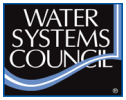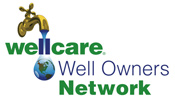In this 5 part series we will discuss a very important and at times overlooked area of residential water treatment, the Disinfection and Sanitization for Residential Water Treatment. The information in this series was prepared by Larry Zinser of Master Water Conditioning. Larry Zinser is a sales engineer with Master Water Conditioning. Following an education with a Bachelor's Degree in Chemistry from Georgetown University, Larry spent 27 years in the Marine Corps before retiring as a Colonel. Since then, Larry has built his career designing, building, teaching and troubleshooting water treatment systems and high purity water applications. His background is in commercial, industrial, and residential applications and he has provided accredited technical courses throughout the country and internationally.
This discussion of disinfection for residential applications will include five steps. First, we will look at the species that pose a threat to human health. Second, we will look at where the threat comes from, and how it can occur and then reoccur. Third, we will look at the overall strategy, which we as service technicians can take to combat and minimize the threat. Fourth, we will then look at the tactics and specific actions which should be taken to combat microorganisms. Finally, we will look at four common installation types, and the practices we can take to win the battle against microbiology.
Part 2: The Source
Microbiological organisms exist in all states of the environment in air, water, and soil. In particular, bacteria and viruses exist in all three. Since water must be moved in order to be useful in the home, it is vulnerable to infestation by microorganisms all the way from its source, through all means of transfer up to the point of use within a home. Anywhere along the way, water source, piping or treatment equipment, microbes can enter the water system. With the exception of rare and tightly controlled environments, like in active pharmaceutical manufacturing, there is NO WATER that is 100% free of microorganisms, especially bacteria and virus. And even within these controlled environments, there must be continuous actions to maintain it for even short periods of time. For municipally treated water, the acceptable standard for potable water requires a bacteria free test 95% of the time, and that is at the point of production, before it travels to homes. 95% is not 100%. Even when bacteria are killed through disinfection, the remains of the bacteria, called endotoxin, can become food for the bacteria that survive. Some activities are particularly dangerous to infection.
For example, whenever a municipality opens a new branch in the distribution system, microorganisms can enter from the environment or from the new piping being installed. According to a report from the Center for Disease Control, voluntarily submitted data from agencies and municipalities from 2013-2014, drinking water associated outbreaks were reported, accounting for at least 1,006 cases of illness, 124 hospitalizations, and 13 deaths. These are only the contaminations events that were reported and there are likely thousands more that went unreported. Legionella was associated with 57% of these outbreaks and all of the deaths. Sixty-nine percent of the reported illnesses occurred in four outbreaks in which the etiology was determined to be either a chemical/toxin or Cryptosporidium. Drinking water contamination events can cause disruptions in water service, large impacts on public health, and persistent community concern about drinking water quality. Effective water treatment, regulations, and rapid response to illness reports continue to protect public drinking water supplies in the United States by reducing the transmission of infectious pathogens, harmful chemicals and toxins.
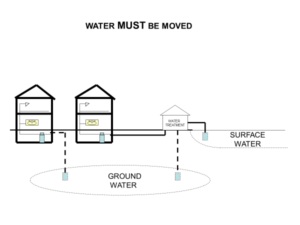
When water is moved from its source to the point of use, it is susceptible to microbial contamination. Regardless if the water source is from a groundwater or surface water supply, all means of water transfer from piping to treatment equipment, microbes can enter the water system.
The same can be said for a new home or water treatment installations, or effectively, any time that the distribution system is exposed to the environment. Even idle water can breed danger as microorganisms in idle water lead to colony formation and even biofilm. Biofilm is defined as an accumulation of sessile microbial growth imbedded in a film of adhesive polymer and attached on the surface of a support material, such as the interior surface of water pipe or water storage vessels. Bacteria within film may be protected from the action of disinfectants and sanitizers. Biofilm is a particularly troublesome activity of microorganisms. Although some biofilms can form in the body, such as on teeth or dentures, it is most troubling in piping systems leading to points of use. Biofilm readily forms inside pipes, matures, and then disperses a batch of new bacteria into the water stream.
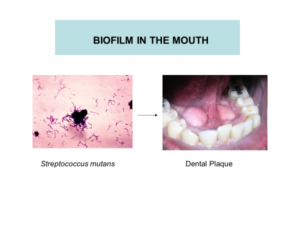
Dental plaque is a type of biofilm we are all familiar with and can be hard to remove even through regular dental care. Now imagine similar biofilms that build up on the inside of piping or water treatment equipment. It is a good example of the difficulty associated with treating and removing biofilm in the water treatment industry.
The process of biofilm formation includes the formation of successive layers of polysaccharides which resists the action of many chemical disinfectants. Bacteria grow and multiply faster when they are sessile or attached to biofilm than when they are free floating in water. Biofilms can contain large colonies of different bacteria and the polysaccharide containing glycocalyx slime layer helps adhere other bacteria and catch nutrients that pass by. Biofilm can be very resistant to chemical disinfectants like bleach and often require some physical action to remove them. The final stage of biofilm, dispersion, is particularly dangerous and hard to predict. Dispersion results in the release of hundreds to millions of bacteria into the water stream.
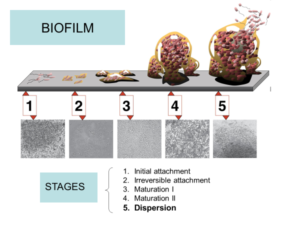
If the correct preventative measures are not taken, biofilm development inside water treatment equipment can be difficult to stop once it begins. In the final stage of biofilm development, dispersion, large numbers of bacteria colonies detach from the biofilm and are released into the water where they can form new biofilms or cause infection and disease if consumed.







